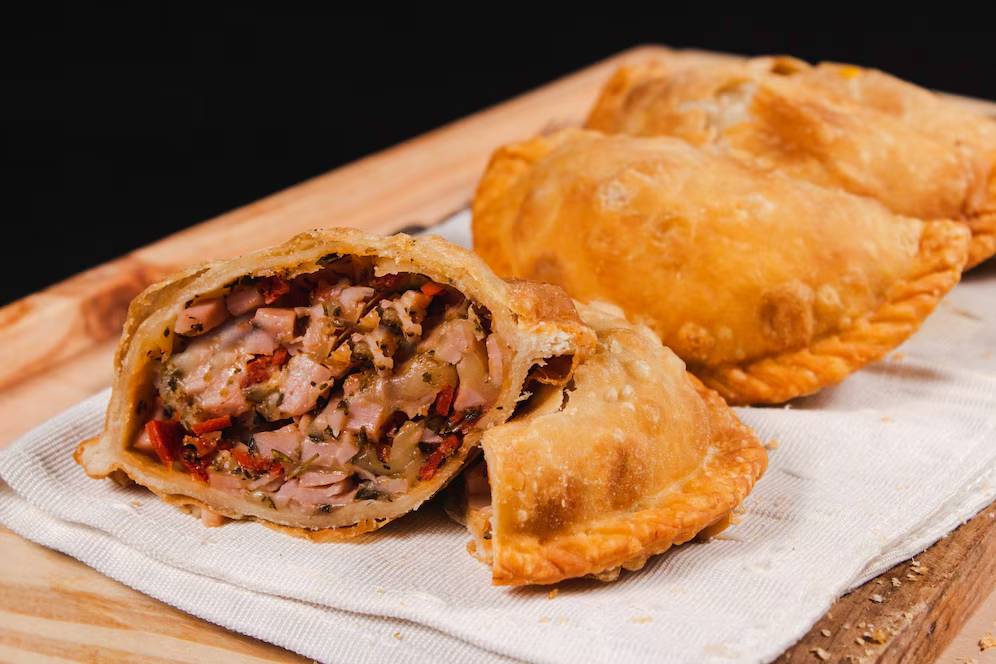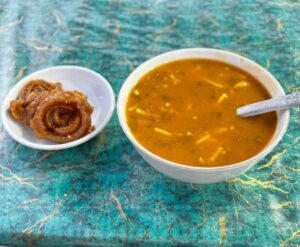The Food & Recipes Blog

Argentina’s Empanadas: A Street Snack Staple
Few foods can capture the heart of a country as much as empanadas do in Argentina. These golden nuggets of flavour are not just food. Whether sizzling on a grill on a street corner or served on a pristine white plate at home, they are a central piece of the country’s identity.
From Buenos Aires’s boulevards to Salta’s rural heartlands, empanadas are one of the region’s favourite and most ubiquitous street snacks, served to locals and visitors alike. But what about the savoury pastries that made them such a dynasty? Today’s post explores the history, regional differences, and cultural significance of Argentine empanadas and their place in the larger spotlight of Latin American cuisine.
So pack your bags, grab your passport — or if you’re a foodie, check your pantry and kitchen for necessities — and prepare for a trip back into food history with this iconic dish.
What Are Empanadas?
A Quick Overview
Empanadas are stuffed pastries, most commonly filled with meat, vegetables and spices, and either baked or fried until golden crisp. Their name comes from the Spanish empanar, meaning “to wrap in bread.”
In Argentina, empanadas have evolved beyond their simple origins to become a culinary symbol of regional identity. While every Latin American country has its take on this versatile dish, the Argentine version is heartily celebrated for its variety, consistency and unusual flavour combinations.
A Brief History of Empanadas in Argentina
European Roots, Local Identity
The empanada is thought to have originated in Spain and was brought over during colonisation in the 16th century. Once in South America, though, local communities quickly adapted it to include indigenous ingredients and cooking techniques.
Over the years, Argentine provinces began developing signature empanada styles, based on local ingredients and seasoning tastes. What started as a convenient, portable meal for workers and travellers has become vital to the Argentine gastronomical identity.
Regional Varieties: A Country of Flavourful Differences
Each Argentine province adds its unique twist to the empanada, offering a glimpse into local tastes and traditions.

1. Salta: Bold and Spicy
Empanadas from Salta are more miniature but packed with robust flavour. Typically filled with minced beef, potatoes, spring onions, and a touch of aji (chilli pepper), they are often fried for extra crispiness.
2. Tucumán: Juicy and Celebrated
Tucumán takes empanadas seriously, so it hosts the National Empanada Festival each September. Known for their juicy fillings and use of beef or chicken with hard-boiled egg and olives, these empanadas are usually baked in clay ovens.
3. Buenos Aires: Classic and Convenient
In the capital, standardised versions are available in bakeries, kiosks, and cafés. Popular choices include ham and cheese, caprese (tomato, basil, mozzarella), and carne suave (mild beef). These are often consumed as a quick lunch or late-night snack.
4. Patagonia: Lamb and Local Ingredients
Patagonia’s cooler climate and livestock culture lend themselves to empanadas filled with Patagonian lamb, goat’s cheese, or mushrooms. They reflect a farm-to-table ethos using what’s locally sourced.
Why Empanadas Are a Staple Street Snack in South America
Empanadas are a quintessential example of South American street food culture. Here’s why:
✦ Portability
Empanadas are easy to eat on the go, perfect for busy urban settings or long bus rides across the pampas.
✦ Affordability
They’re budget-friendly, usually costing less than a few dollars. This accessibility ensures their popularity across all social groups.
✦ Variety
With meat, vegetarian, and even vegan options now available, empanadas appeal to a broad audience. This variety keeps them exciting and ever-relevant.
✦ Tradition Meets Innovation
While traditional fillings remain beloved, modern interpretations include sweet empanadas with quince paste or dulce de leche, showing how the dish continues to evolve.
The Cultural Significance of Empanadas
A Dish That Brings People Together
In Argentina, empanadas are more than food—they’re a communal experience. Families gather to make them for holidays, parties, and religious celebrations. Each step, from preparing the dough to sealing the edges (repulgue), is steeped in shared tradition.
Representation of Regional Identity
Empanadas serve as culinary ambassadors for each Argentine province. A bite into a Jujuy empanada differs vastly from one from Córdoba, and locals often pride themselves on their regional style.
Global Recognition
In recent years, empanadas have made their way onto international menus, often featured in fusion cuisine. Food festivals and Argentine restaurants abroad now showcase this versatile dish, cementing its status in the global food scene.
How Empanadas Fit Into the Latin American Food Landscape
A Pan-Latin Classic
While Argentina offers some of the most refined versions, empanadas are ubiquitous across Latin America. Each country boasts its signature style:
- Chile: Often includes raisins and black olives.
- Colombia and Venezuela: Corn dough is commonly used.
- Mexico: Known for spicier versions and more fried options.
Despite their differences, empanadas across Latin America share an everyday appeal—comfort, flavour, and cultural heritage.
Tips for Enjoying Authentic Empanadas in Argentina
If you’re planning to visit Argentina or want to recreate the experience at home, here are a few tips to savour this staple street snack:
Where to Find the Best Empanadas
- Street vendors in Salta or Mendoza for traditional versions.
- Panaderías (bakeries) in Buenos Aires for everyday staples.
- Parrillas (grill restaurants) often include empanadas as appetisers.
What to Pair With Them
- A glass of Malbec for a classic pairing.
- Mate (traditional herbal tea) for a daytime snack.
- Chimichurri sauce or ají criollo for extra flavour.
DIY at Home
Making empanadas is surprisingly achievable with basic ingredients:
- Dough: Flour, salt, butter, and water.
- Filling: Ground beef, onion, cumin, paprika, hard-boiled egg.
- Bake or fry depending on your preference.
Why Empanadas Matter

The empanada is not merely a beloved South American street snack but a prism through which we can read Argentina’s adventurous history, diversity of culture and gastronomic imagination. That means, whether you’re munching a juicy, smoky lamb-stuffed empanada in Patagonia or chowing down on a spicy Salteña on a city street, you’re participating in a tradition that has knitted communities together for centuries.
With their simplicity, complexity, and elegance, empanadas are a timeless source of joy, sustenance, and companionship—not only in Argentina but around the world.
Do you want more Latin American food traditions? You can immerse yourself in the culture through your taste buds, one bite at a time.
Want to try taking a tour of Argentina’s empanadas on your own? If you’re embarking on a culinary tour or simply attempting to recreate the magic at home, start with authentic recipes and local flavours. What’s your favourite, or how do you make empanadas? Leave us your comments below!









